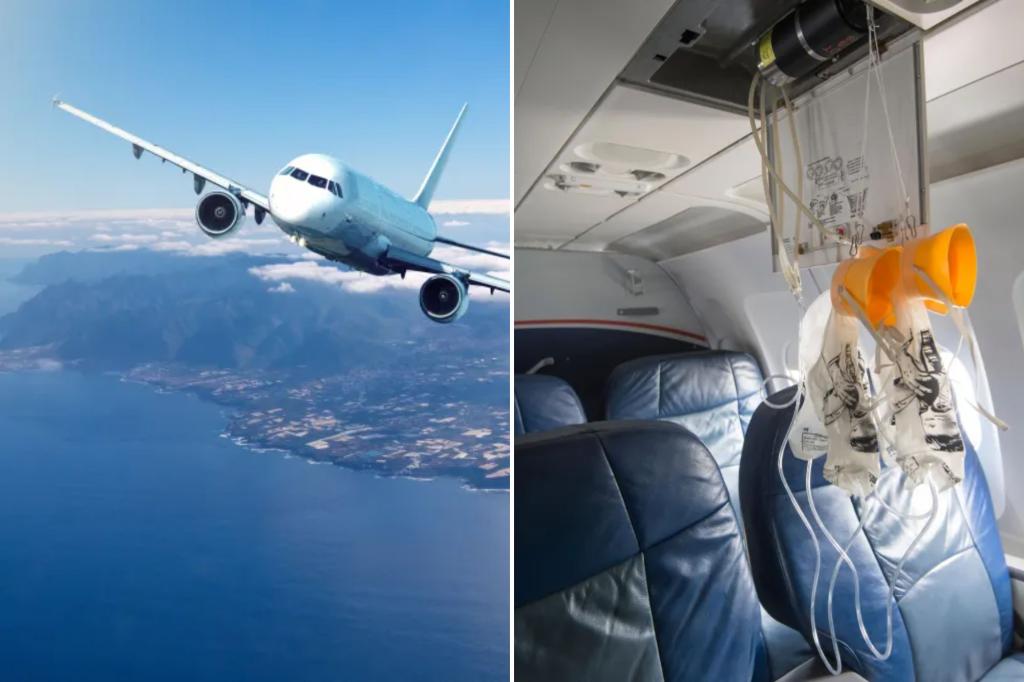This is what happens when something scary goes bump in the flight.
While air travel is still one of the safest modes of transport, some flight-eningly common issues can occur in the air.
In fact, the Conversation writes that in-flight “technical issues” are part and parcel of flying the friendly skies and airplanes are equipped with layers of redundancy measures and warning systems to alert pilots, who train extensively to handle in-flight fiascos.
This way, said technical issues generally result in travel delays instead of tragedies.
As a service to flyers, the publication recently ranked the most common “scary-sounding” failures that people might experience and how crew members handle them at 30,000 feet.
Air conditioning and pressurization issues
As people couldn’t otherwise survive at cruising altitude — generally 36,000 feet — the aircraft cabins are artificially comfortable altitude of 8,000 feet using air conditioned air from the jet engines, so flyers can remain cool under “pressure.”
And while this system makes flying generally a breeze — an artificial air chamber malfunction could induce a pressurization problem, causing a dramatic airplane plunge, ears popping and even oxygen masks to deploy. They normally drop automatically if cabin altitude eclipses 14,000 feet — roughly the height of California’s Mount Shasta.
Upon spotting a sign of the air-pocalypse, captains will don their oxygen masks and bring the airplane up to around 10,000 feet as quickly as possible. They’ll then generally make an emergency landing or divert to the point of departure.
In 2024, a Tui Airways flight had to make an emergency landing in England last year after the cabin failed to pressurize due to pilots overlooking key switches, putting the 193 passengers at risk of life-threatening hypoxia.
Engine failure
There are few more frightening in-flight mishaps than engine failure, which generally involves one of the aircraft’s twin engines.
Simultaneous engine malfunctions are far more serious and rare, as was the case with the Air India flight over the summer, which crashed shortly after landing, resulting in the deaths of 270 people.
An engine failure is often denoted by a loud bang, sparks flying out of the engine, as well as a burning smell or sudden silence.
Pilots are subsequently alerted to the catastrophe, whereupon they follow the emergency contingency procedures. This entails shutting down the wonky engine, descending to the requisite altitude and then either diverting or returning to the point of origin, depending on how far into the journey they are.
Flight control and hydraulic issues
While a flight control issue might seem like an unmitigated disaster, it can actually be salvageable due to the multiple hydraulic and electrical systems involved. Should one system go on the fritz, the other ones keep the aircraft aloft.
Nonetheless, pilots need to follow emergency procedures, in which pilots “decide on the landing configuration, request the longest suitable runway and emergency services just in case,” the Conversation reports.
In the event of a flight control malfunction, passengers might experience an accelerated landing or be stuck in a holding pattern as the pilots deliberate over the best course of action.
Brake and landing gear issues
Airplanes’ braking and landing process involves a smorgasbord of moving parts, including retractable landing gears that remain tucked up inside a compartment for most of the trip, but come out before landing.
Then there are the brakes inside the wheels that serve to slow the aircraft down after landing.
Unfortunately, this complexity makes the system particularly susceptible to backfiring either due to a hydraulic mishap or the landing gear not extending or retracting properly, in which case the passengers and crew will be instructed to “brace for landing,” among other instructions.
In the event of a breakdown, pilots will review their checklists and then “contact maintenance engineers to troubleshoot the problem.”
“In extreme cases, they may be required to land at the longest runway available (in case of brake problems) or land on the belly (if the landing gear can’t be lowered),” the convo writes.
Despite the myriad potential in-flight mishaps, air travel remains among the safest forms of transport.
An August study by the Massachusetts Institute of Technology (MIT) found that air travel is safer than ever
“You might think there is some irreducible risk level we can’t get below,” said professor and study author Arnold Barnett. “And yet, the chance of dying during an air journey keeps dropping by about 7% annually, and continues to go down by a factor of two every decade.”
Read the full article here


